This Colonial Brown Bread recipe is simple, hearty, and satisfying. It is a perfect bread to serve with an old-fashioned pot roast or stew in the wintertime.
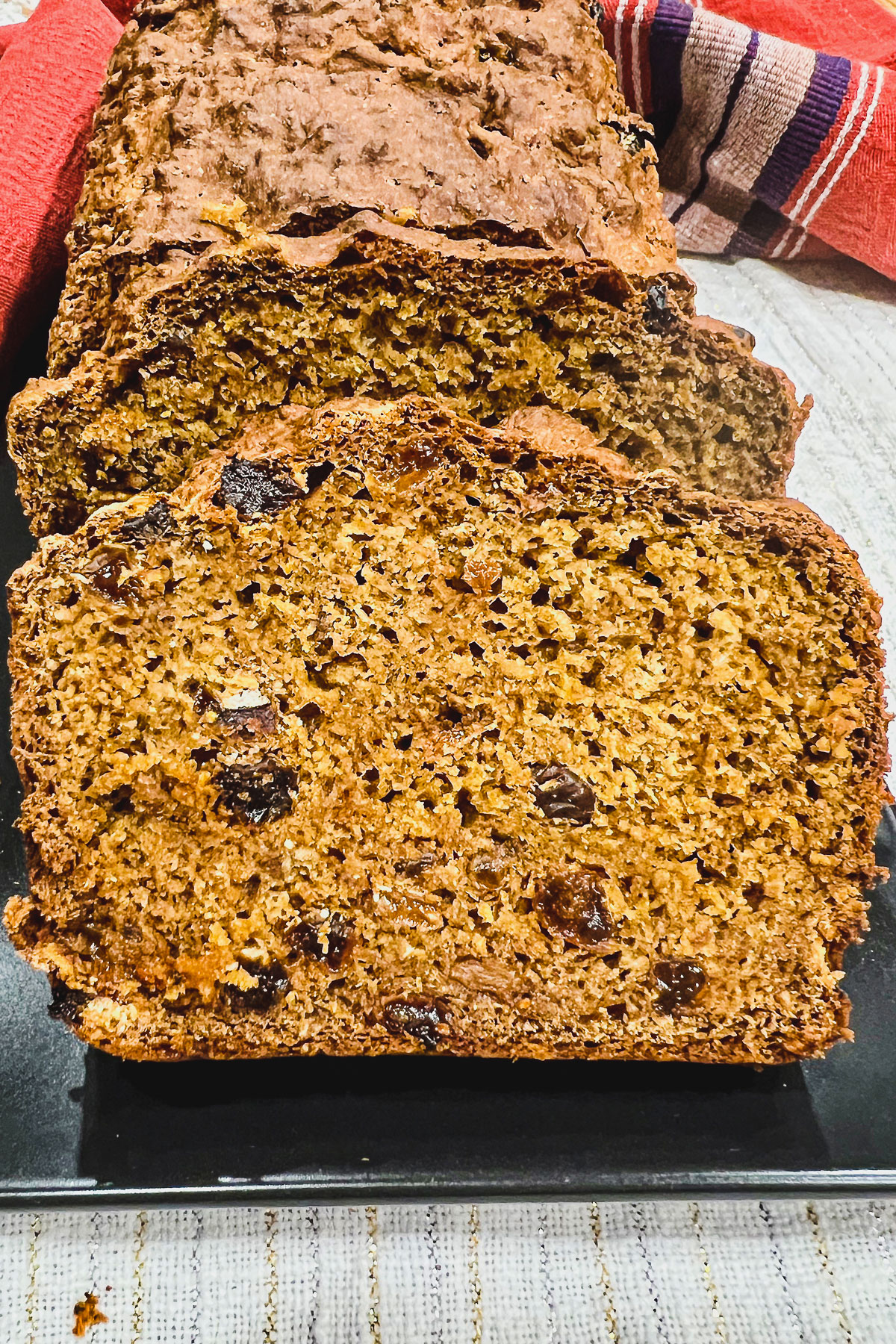
It is February and snowing outside, so I am going to bake for dinner a hearty bread to go with a stew I made yesterday. The recipe is super simple, and the results are amazing. There is nothing better than a fresh loaf of bread coming out of the oven.
Jump to:
What is Colonial Brown Bread?
Colonial Brown Bread, popular in colonial New England, is a dense, quick whole grain bread. It's typically made with molasses, whole wheat, and cornmeal flour. However, there are many variations.
Some use all-purpose or rye flour, and sweeteners like honey or brown sugar instead of molasses. Some include raisins. While cornmeal and molasses are common, they're not essential. This bread was a colonial staple due to its simplicity and long shelf life.
Traditionally, it's cylindrical, baked in a can, but modern versions vary. For instance, mine uses whole wheat flour and dark brown sugar, baked in a regular loaf pan.

Ingredients:

(For the full list of ingredients and instructions, please scroll to the end of the article for a printable recipe card.)
Buttermilk and baking soda:
Buttermilk and baking soda are essential in brown bread for these key reasons:
- Leavening: They create a reaction that makes the bread rise, giving it a light, fluffy texture.
- Flavor Enhancement: Buttermilk's tangy taste complements the bread's sweetness and adds depth.
- Tenderness: Buttermilk's acidity softens the bread by breaking down gluten, which is crucial for dense, whole-grain bread like Colonial Brown Bread. Without them, the bread may be dense and lack flavor.
If you don't have buttermilk, you can use a substitute like whole milk with lemon juice or vinegar to create a similar acidity.
However, it's important to note that the flavor and texture of the bread may be slightly different without the tanginess and acidity of the buttermilk.
Related: Tasty Sweet and Savory Buttermilk Recipes
How to make this recipe:
What tools are you going to need:
- Large bowl
- Measuring bowls
- Measuring cups
- Measuring spoons
- 9 ½x5 ½-inch Loaf pans
- Wooden spoon or a Danish Dutch Whisk (my favorite tool in the kitchen-affiliate link)
Step 1. Preheat oven to 350F/180C and butter the loaf baking pan. Set it aside.

Step 2. Place both types of flour, baking soda, spices, salt, and optional raisins in a large bowl and stir to combine.

Step 3. Pour the buttermilk over the dry ingredients.

Stir well until well blended.

Step 4. Spoon the mixture into the prepared pan.

Step 5. Bake for 1 hour, or until it tests done. Remove from the pan and cool on a wire rack.

Step 6. Cut into thick slices while still warm.

How to store this Colonial Brown Bread:
The freshness of Colonial Brown Bread depends on the recipe and storage. Typically, homemade bread lasts a few days. In an airtight container at room temperature, it's good for 2-3 days. Refrigerating it extends freshness to about a week.

Can I freeze this bread?
Yes, you can freeze this bread. Wrap it tightly in plastic wrap or foil, then store it in an airtight container or freezer bag. It can be frozen for up to three months. To thaw, simply leave it at room temperature.
Keep in mind that freezing may slightly alter its texture and flavor, but it's generally a robust bread that reheats well, making it suitable for meal prep and advance preparation.
How to serve
Colonial Brown Bread is a hearty and flavorful bread that can be served with a variety of dishes. Traditionally, it was often served with stews, soups, and other hearty meals, but it can also be paired with a wide range of sweet and savory foods.
Here are some ideas for foods that are suitable to serve with Colonial Brown Bread:
- Soups and stews: Brown bread is perfect for soaking up the flavorful broth of soups and stews. Try my 17 Instant Pot Stew Recipes. Or try serving it with this beef stew.
- Beans: Another classic pairing for brown Bread is cooked beans. The bread's sweetness and dense texture complement the savory and smoky flavors of the beans.
- Sandwiches: Try it with sliced turkey or roast beef, or make a grilled cheese sandwich with it.
- Cheese and spreads: The bread's sturdy texture is ideal for pairing with cheese and spreads. You can enjoy it with cream cheese and smoked salmon, sharp cheddar and apple butter, chicken salad, or ham salad.
- Breakfast dishes: This brown bread can be toasted and served with butter and jam for a delicious breakfast. It can also be used as a base for French toast or bread pudding.

More Recipes To Enjoy
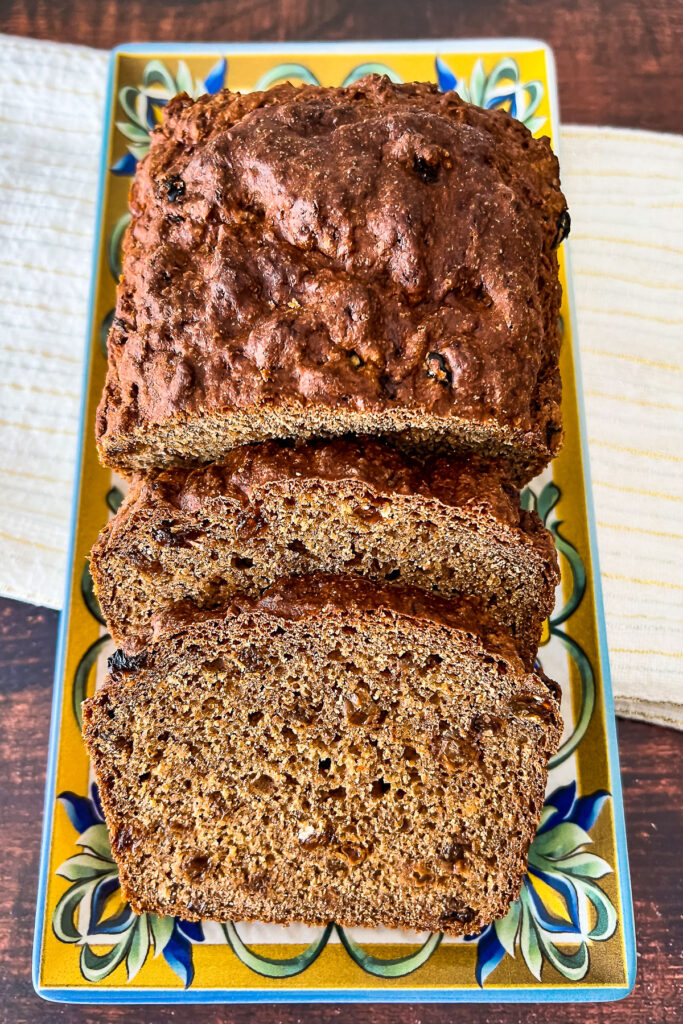
More Bread Recipes
📖 Recipe

Colonial Brown Bread
Equipment
Ingredients
- 2 cups buttermilk
- 2 cups whole-wheat flour
- ⅔ cup all-purpose flour
- ½ cup dark-brown sugar packed
- 2 teaspoons baking soda
- ¼ teaspoon cinnamon powder
- ¼ teaspoon ginger powder
- ¼ teaspoon nutmeg powder
- ¼ teaspoon allspice
- ½ teaspoon salt
- ¾ cup raisins optional
Instructions
- Preheat the oven to 350F/180C. Grease a 9 ½x5 ½-inch loaf pan and set it aside.
- In a large bowl, place the dry ingredients together.
- Add buttermilk over the dry mixture and blend well.
- Spoon the mixture into the prepared pan.
- Bake for 1 hour, or until it tests done. Remove from the pan and cool on a metal rack.
- Cut into thick slices while still warm.

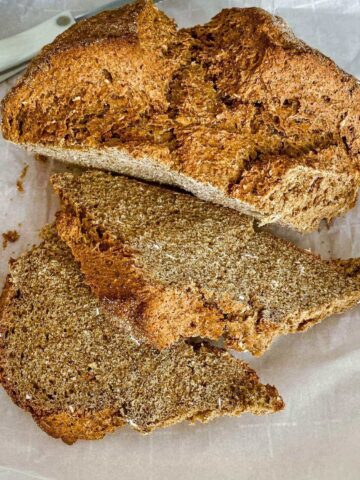
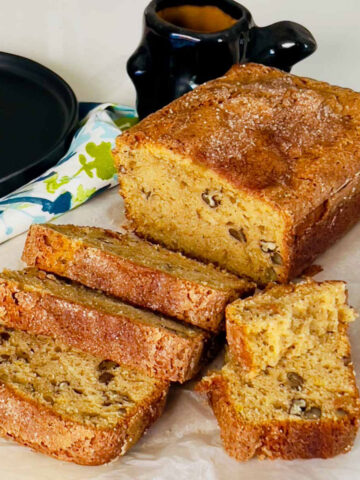
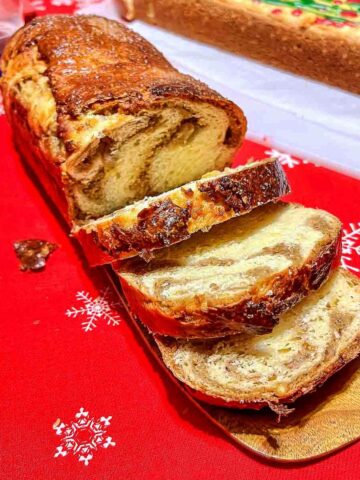
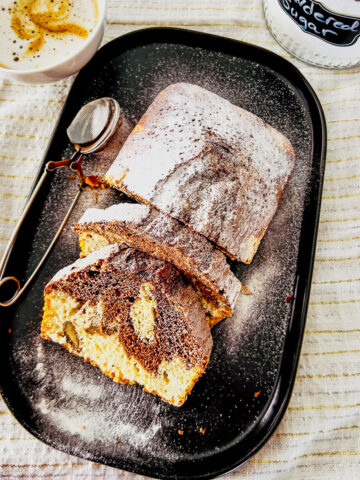
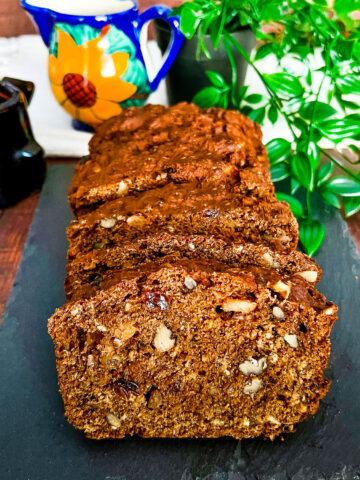


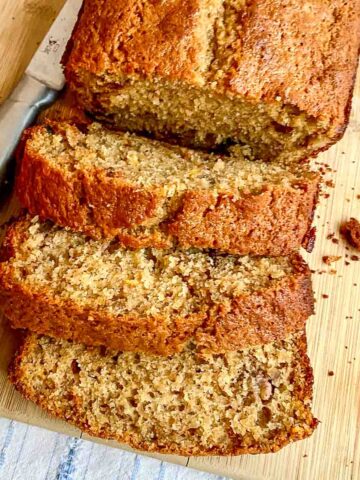
Gigi says
This looks delicious! I can’t wait to try it with some good quality butter on it.
The Bossy Kitchen says
Thanks, Gigi! Let me know when you make this bread!